Inactivated cGAS-STING Signaling Facilitates Endocrine Resistance by Forming a Positive Feedback Loop with AKT Kinase in ER+HER2- Breast Cancer
- PMID: 39023171
- PMCID: PMC11425221
- DOI: 10.1002/advs.202403592
Inactivated cGAS-STING Signaling Facilitates Endocrine Resistance by Forming a Positive Feedback Loop with AKT Kinase in ER+HER2- Breast Cancer
Abstract
Endocrine-resistant ER+HER2- breast cancer (BC) is particularly aggressive and leads to poor clinical outcomes. Effective therapeutic strategies against endocrine-resistant BC remain elusive. Here, analysis of the RNA-sequencing data from ER+HER2- BC patients receiving neoadjuvant endocrine therapy and spatial transcriptomics analysis both show the downregulation of innate immune signaling sensing cytosolic DNA, which primarily occurs in endocrine-resistant BC cells, not immune cells. Indeed, compared with endocrine-sensitive BC cells, the activity of sensing cytosolic DNA through the cGAS-STING pathway is attenuated in endocrine-resistant BC cells. Screening of kinase inhibitor library show that this effect is mainly mediated by hyperactivation of AKT1 kinase, which binds to kinase domain of TBK1, preventing the formation of a trimeric complex TBK1/STING/IRF3. Notably, inactivation of cGAS-STING signaling forms a positive feedback loop with hyperactivated AKT1 to promote endocrine resistance, which is physiologically important and clinically relevant in patients with ER+HER2- BC. Blocking the positive feedback loop using the combination of an AKT1 inhibitor with a STING agonist results in the engagement of innate and adaptive immune signaling and impairs the growth of endocrine-resistant tumors in humanized mice models, providing a potential strategy for treating patients with endocrine-resistant BC.
Keywords: AKT kinase; cGAS‐STING pathway; endocrine‐resistant breast cancer; positive feedback loop.
© 2024 The Author(s). Advanced Science published by Wiley‐VCH GmbH.
Conflict of interest statement
The authors declare no conflict of interest.
Figures
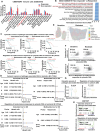
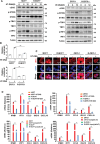
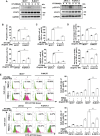
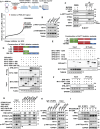
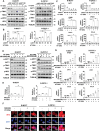

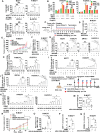
References
-
- Giaquinto A. N., Sung H., Miller K. D., Kramer J. L., Newman L. A., Minihan A., Jemal A., Siegel R. L., Ca‐Cancer J. Clin. 2022, 72, 524. - PubMed
-
- Pan H., Gray R., Braybrooke J., Davies C., Taylor C., McGale P., Peto R., Pritchard K. I., Bergh J., Dowsett M., Hayes D. F., N. Engl. J. Med. 2017, 377, 1836. - PubMed
-
- Zhu W., Xu B., Front. Med. 2021, 15, 208. - PubMed
-
- Rugo H. S., Delord J.‐P., Im S.‐A., Ott P. A., Piha‐Paul S. A., Bedard P. L., Sachdev J., Tourneau C. L., van Brummelen E. M. J., Varga A., Salgado R., Loi S., Saraf S., Pietrangelo D., Karantza V., Tan A. R., Clin. Cancer Res. 2018, 24, 2804. - PubMed
MeSH terms
Substances
Grants and funding
LinkOut - more resources
Full Text Sources
Medical
Research Materials
Miscellaneous
